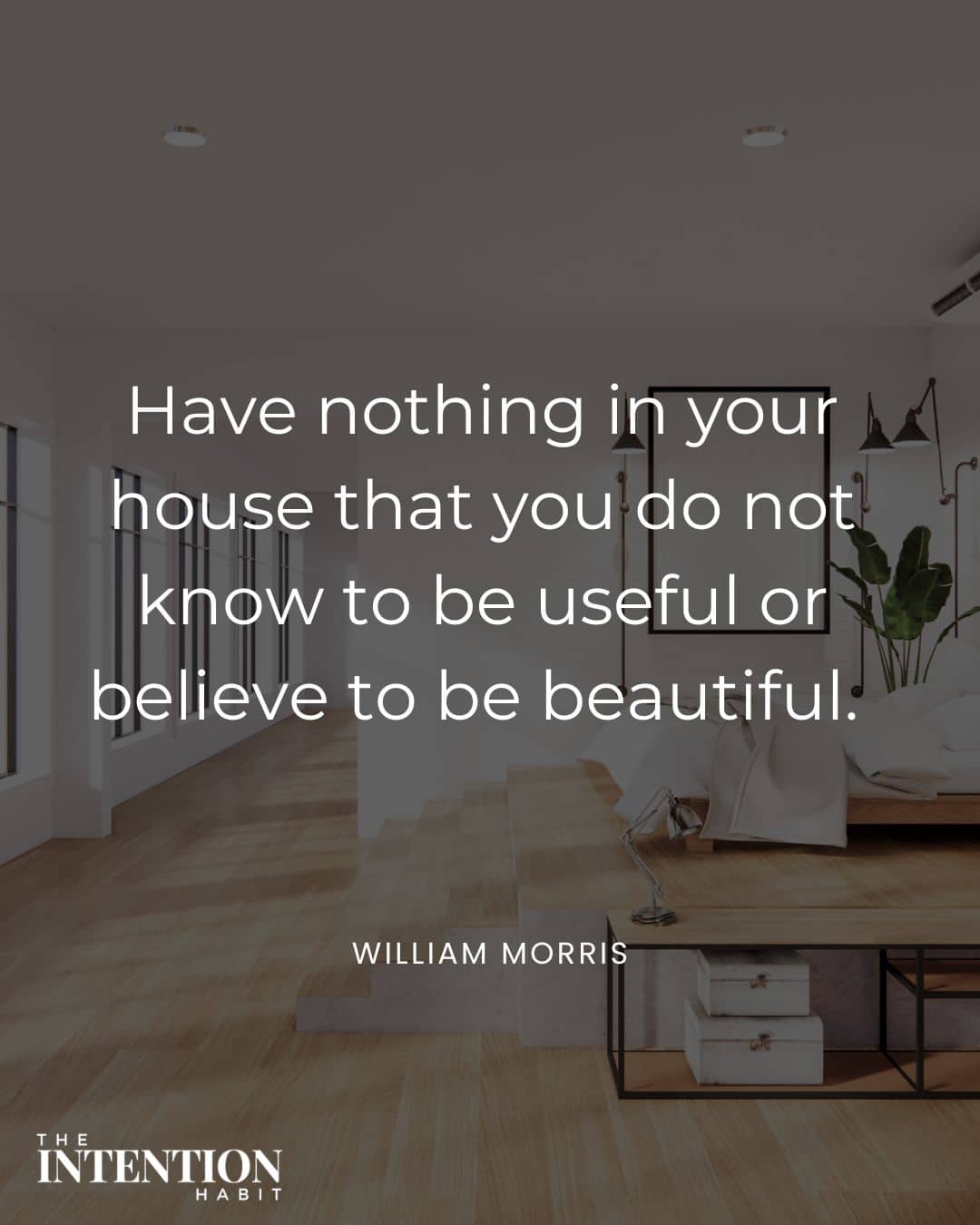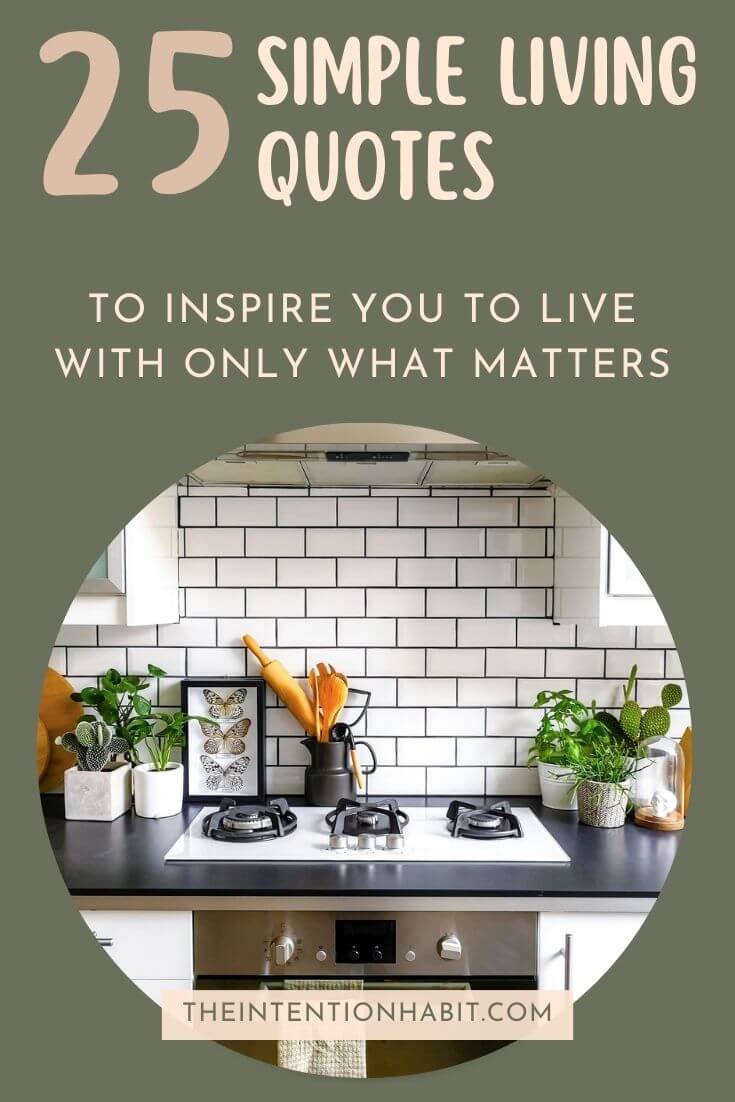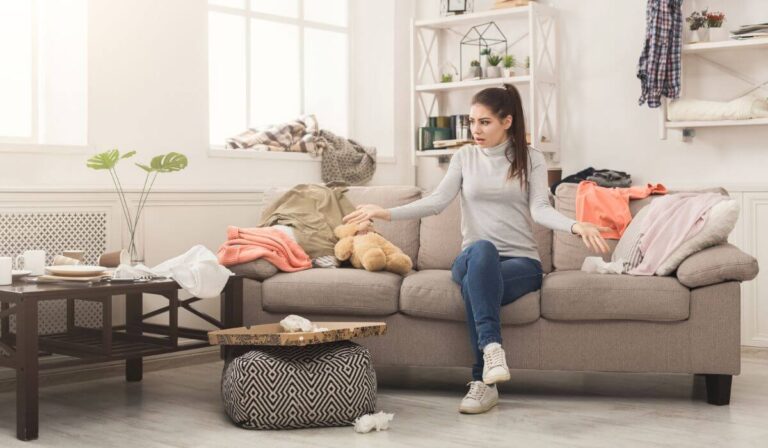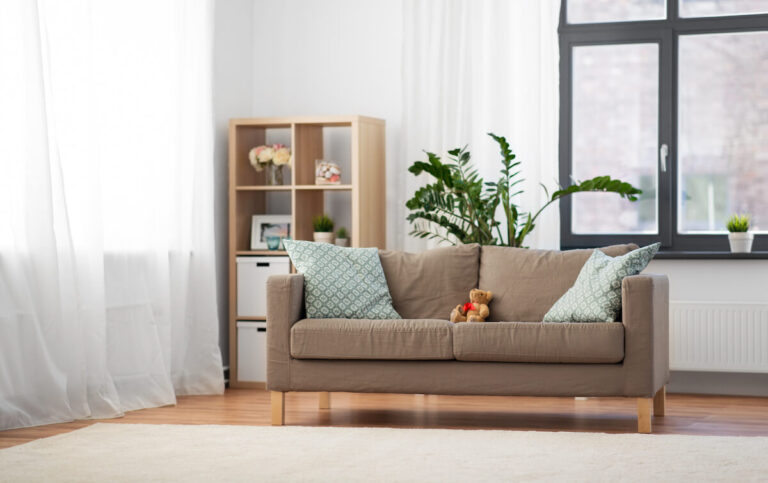How To Simplify Your Home: Step By Step To Clutter Free
When you are surrounded by clutter, mess and absolute chaos, your home feels far from the sanctuary it should be! If you’re reading this, there’s a pretty good chance you’re sick of feeling overwhelmed and you want to know how to simplify your home.
It’s near impossible to live an intentional life if you’re constantly in a state of elevated stress in the one place you should feel most relaxed.
That’s why, if you want to create an inviting and stress-free environment for you and your family, you need to organise and simplify your house! And this guide will help you to do exactly that!
The Benefits of a Simplified Home
In the whirlwind of our daily lives, it’s easy to overlook the impact our living environment has on our overall feeling of wellbeing.
A cluttered and disorganised home not only drains our energy but can impact a lot of other areas of our lives as well.
It was this very experience that lead me into my blogging life, as a way to stay accountable and share my journey of simplifying in the process. I am naturally messy and can at times be reluctant to part with things but I have made many changes over the years, and continue to work on my own journey to a simple home.
And that doesn’t mean embracing minimalism.
Minimalism isn’t my style personally, but only keeping the things that really matter has made a huge impact on our living space!
A simplified home can mean:
- Less time wasted on cleaning, searching and containing all the things
- A calmer environment for the whole family
- Improved focus and clarity (not surrounded by chaos)
- Saving money by being more intentional with purchases
- More confidence and feeling ‘house proud’
How To Simplify Your Home
Now that we understand the importance of simplifying our homes, it’s time to roll up our sleeves and tackle the clutter beast head-on.
Step 1 – Assess The Situation
Start by assessing your current living space and consider the areas within your home that are causing the most frustration and stress.
During this assessment stage, consider any clutter hotspots you have. These are areas within your home where clutter tends to accumulate.
Common home clutter hotspots can include:
- Kitchen countertops
- Dining room table
- Kids’ toy areas
- Closets
- Flat surfaces like shelves & tables
My worst clutter hot spot has always been my desk and home office as a whole. It has often been the dumping ground for items that had no proper home and that in itself is a huge problem – having items that don’t have a proper place!
You might have just one or two key areas in your home that are an issue, or you might feel like your whole house is in need of decluttering. Either way, that’s okay. These strategies are for any scenario.
Step 2 – Set Your Vision
Once you have assessed your home and identified the key areas causing you stress, it’s time to set yourself a vision for these spaces.
What does a simple home mean to you?
Is it a cozy space that is well-organised?
Or is it a minimal space with only the essentials?
We all have different ideas and personal preferences when it comes to our homes, so before you start decluttering, decide what your dream space would actually look like.
Really visualise it. Imagine yourself living in this new, improved house of your dreams.
This will help you take action without feeling completely overwhelmed.
Do you want an organised office? Or a spacious living area with plenty of breathing room? Do you want a bedroom that feels cozy and calm?
Once you have set your vision, it’s time to start tackling the clutter!

Step 3 – Define Your Zones
Now that you have a vision for your simplified home, it’s time to start dividing up the rooms and areas.
Dividing your home into separate zones will help you stay focused when decluttering. This also allows you to break down the process into smaller tasks – which can make it feel less overwhelming!
For example, if you are looking to declutter your living room, divide it up into sections like bookshelves, entertainment units, toys and games, media, etc. This will help you stay focused and make the process more manageable.
Step 4 – Remove Unnecessary Items
When it comes to simplifying your home, getting rid of unnecessary items is key. Before focusing on specific zones, I like to kick off with a quick sweep of the house.
As you walk from room to room, remove anything that you know you no longer want or need. This is also the time to throw out obvious surface trash too, like junk mail on the counter, old magazines or newspapers, empty boxes and broken items.
For the stuff you don’t plan to throw out, have a box or area for all the items you plan to donate and another for all the items you plan to sell.
Step 5 – Declutter Zone By Zone
It’s time to start working through your clutter zones. Depending on how cluttered your home is, this process might take you a day or it might take you a month or more.
There is no ‘right way’ to simplify your home, so long as you are continually making progress towards your vision.
Start with the first zone and work your way through. I like to start by going through all the items in each zone and sorting them into four piles: keep, donate, sell, and trash.
Some people like to pull out everything from a space and declutter the entire area at once. This is not my style at all! I have tried the KonMari method of doing this with clothing and it was so overwhelming. It took a full day just to do my wardrobe! No thanks.
I don’t want that kind of overwhelm for you, so what I instead do is work in smaller zones, such as a single drawer, a single clothing rack or a single shelf of shoes.
This way you get to feel accomplished after each smaller project is completed too! Those quick-win endorphins are the best!
How To Decide What To Keep & What To Declutter
This is where things can get tricky! We all have roadblocks when it comes to decluttering!
It’s important to remember that decluttering is about creating a functional and peaceful home for you.
When deciding what to keep and what to let go, ask yourself the following questions:
- When was the last time I used it?
- Do I have another item like this?
- Is there something else I can use instead of this?
- Is it adding value to my life?
- If I saw this item at the shop today, would I buy it?
- Do I love this item?
These decluttering questions can be helpful in taking the emotion out of most of the decision-making process.
If you’re answering no to all these questions, but still finding it hard to let go, consider if there is another reason holding you back.
This guide about dealing with sentimental clutter can be helpful in finding the true value of an item and if we are letting our negative emotions hold us back.
While I don’t love some of the steps in the KonMari method of decluttering as a whole, founder Marie Kondo does advocate for only keeping items that bring us joy, which is important!
If it doesn’t make you feel happy when you hold it or look at it, then it’s probably time to let it go.
Getting Rid Of Unwanted Clutter
Once you have sorted through your items and decided what to keep, it’s time to get rid of the clutter.
The easiest way is to donate any unwanted items in good condition or sell them on sites like eBay or Craigslist. If you don’t have the time or energy for that, consider taking everything to a local charity centre.
In all honesty, unless they are high-value items, the effort to sell them is rarely worth it. This was once one of my clutter roadblocks – the thought of so much wasted money!
But these days I value my time much more than the few bucks I might make on Facebook Marketplace.
Consider the value of your time, but make sure you get these items out of your house quickly! Set a deadline for yourself so that you can be sure they won’t end up back in your cupboards.
How To Maintain Your Simplified Home
Once you have decluttered your home, maintaining that simplicity is important too. This is where creating systems and routines can be helpful.
Here are some tips on how to have a simple home long-term:
- Have a designated space for each item in the house and train yourself or family members to return the item to that space after use.
- Create a weekly cleaning routine that includes riding up your spaces.
- Establish a donation station in your home and try to donate or pass items on as soon as you realise they are not being used or enjoyed.
- Be intentional with your spending and think before you buy.
- Do an annual declutter of your spaces (this should get easier each year)
- Set a 5-minute timer each day to do a quick pick up and tidy. I like to do this before bed.
- Limit ornaments and decorative items to the things you actually love.
- Do a one-in-one-out rule with items like clothing when you buy something new.
Simplifying your home can be a daunting task but one that is well worth the effect. Break it down into smaller steps and work through it at your pace. Get the family involved too! It’s rarely a once-done process but a long-term change of habits to live with only what really matters.
Get a little extra inspiration with these quotes about simple living and these simple living books.







